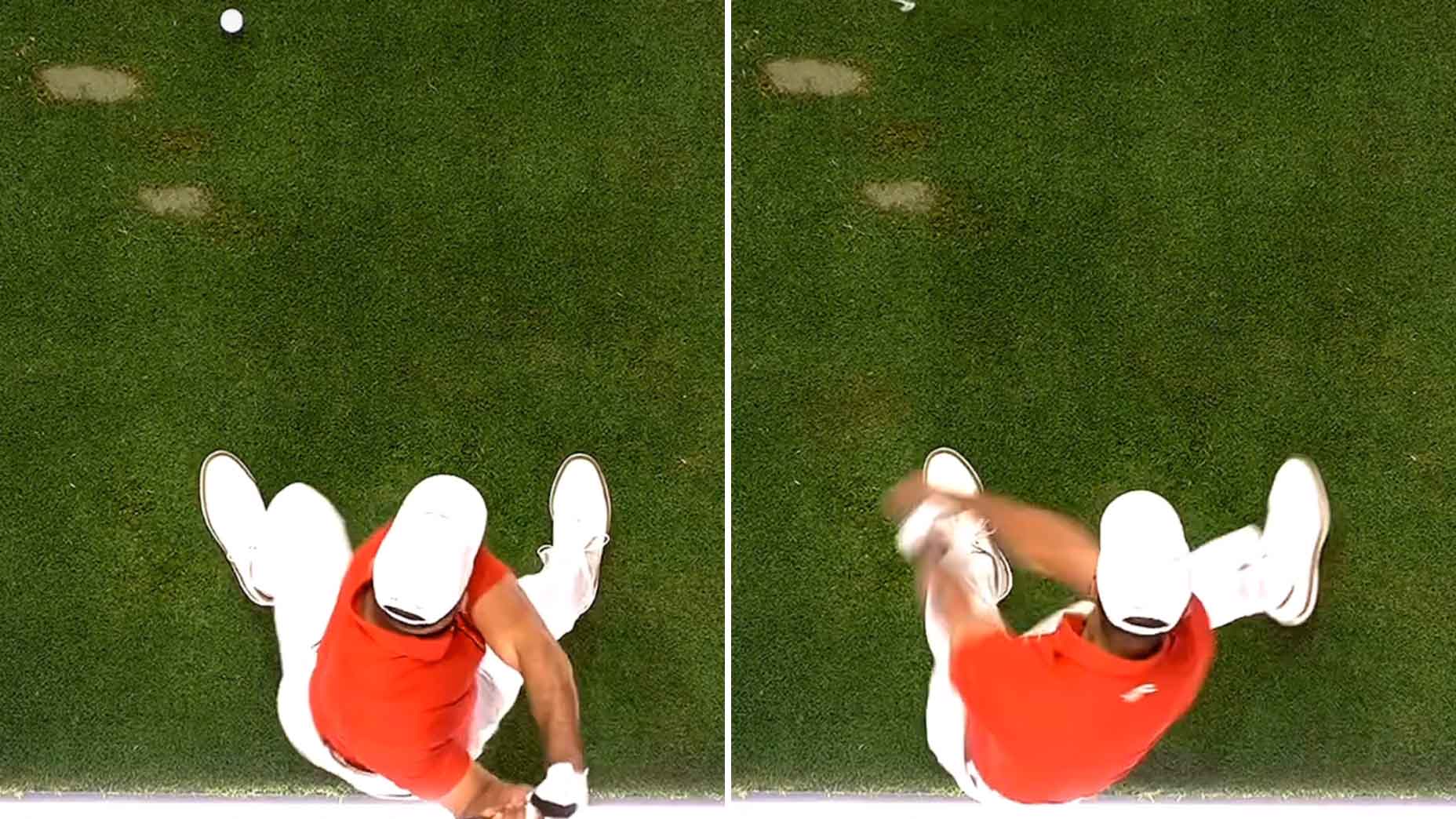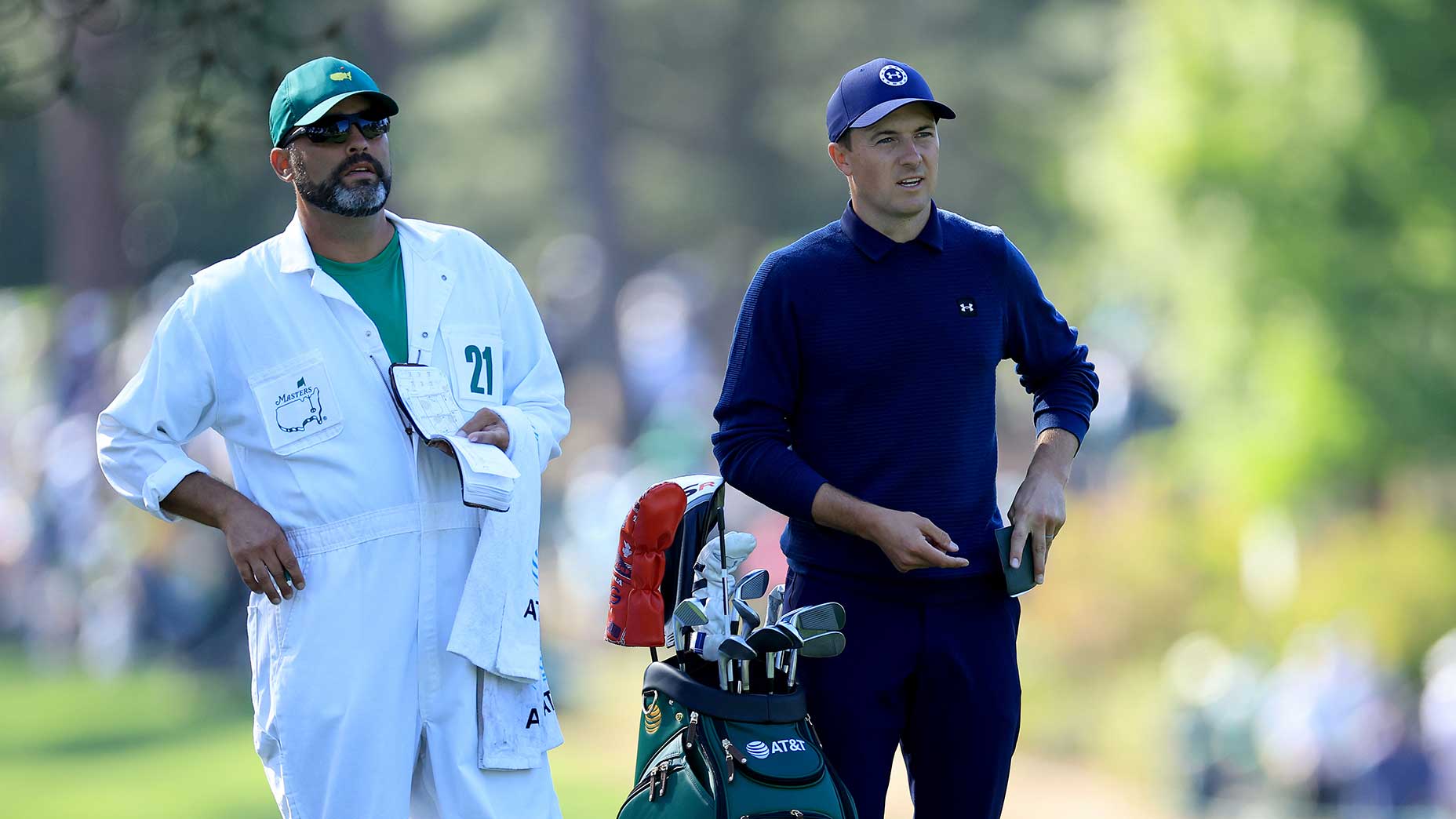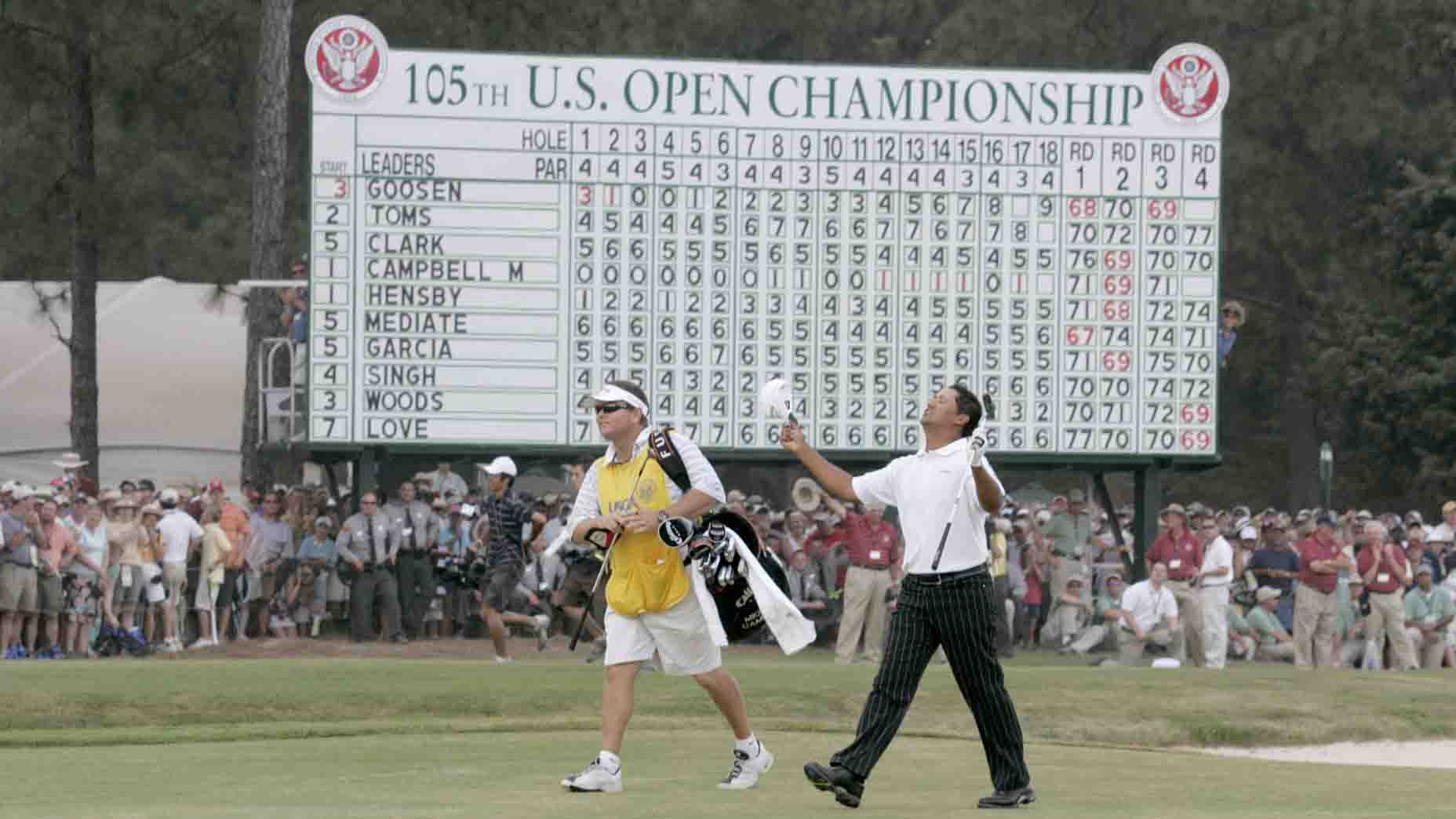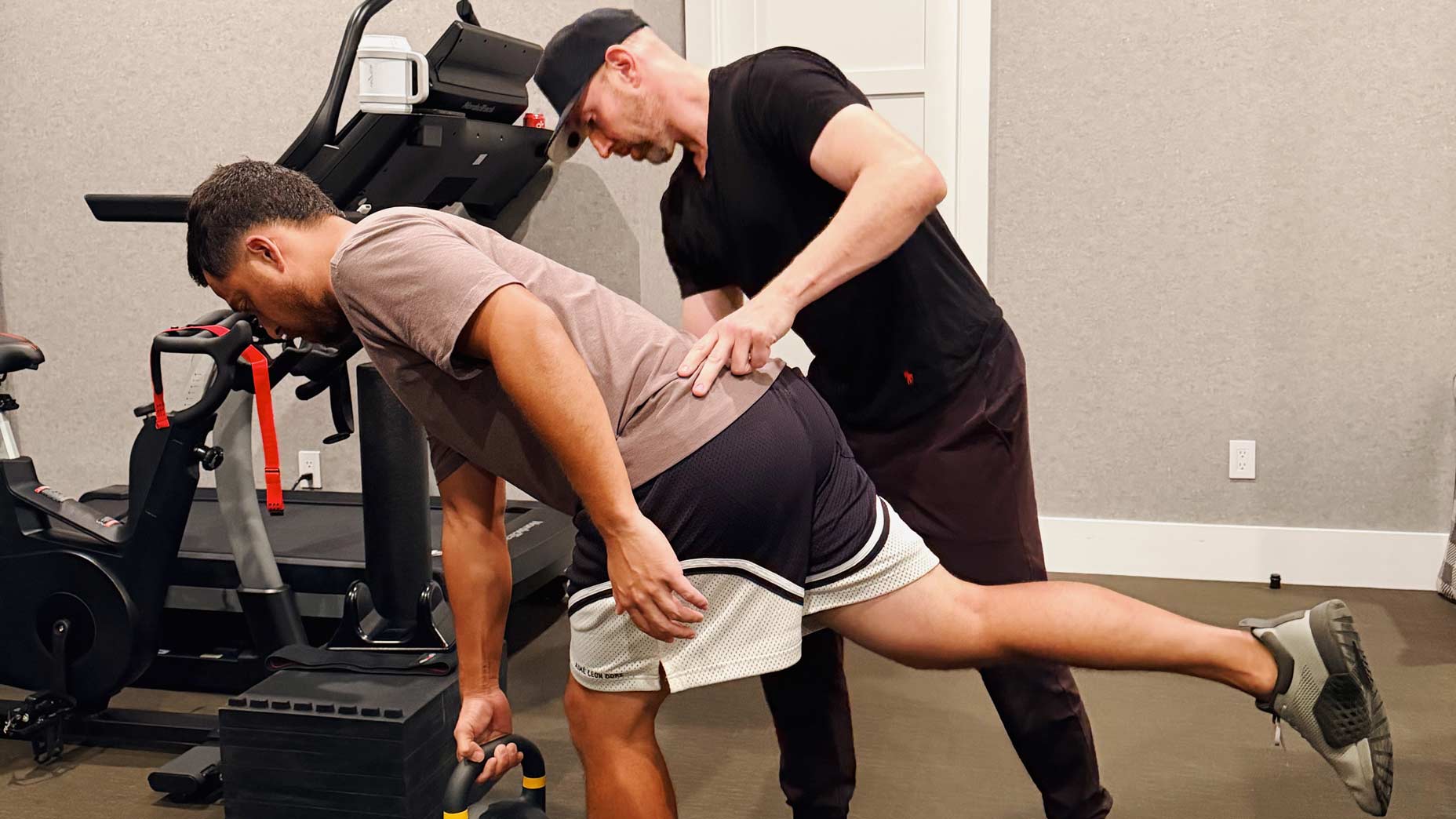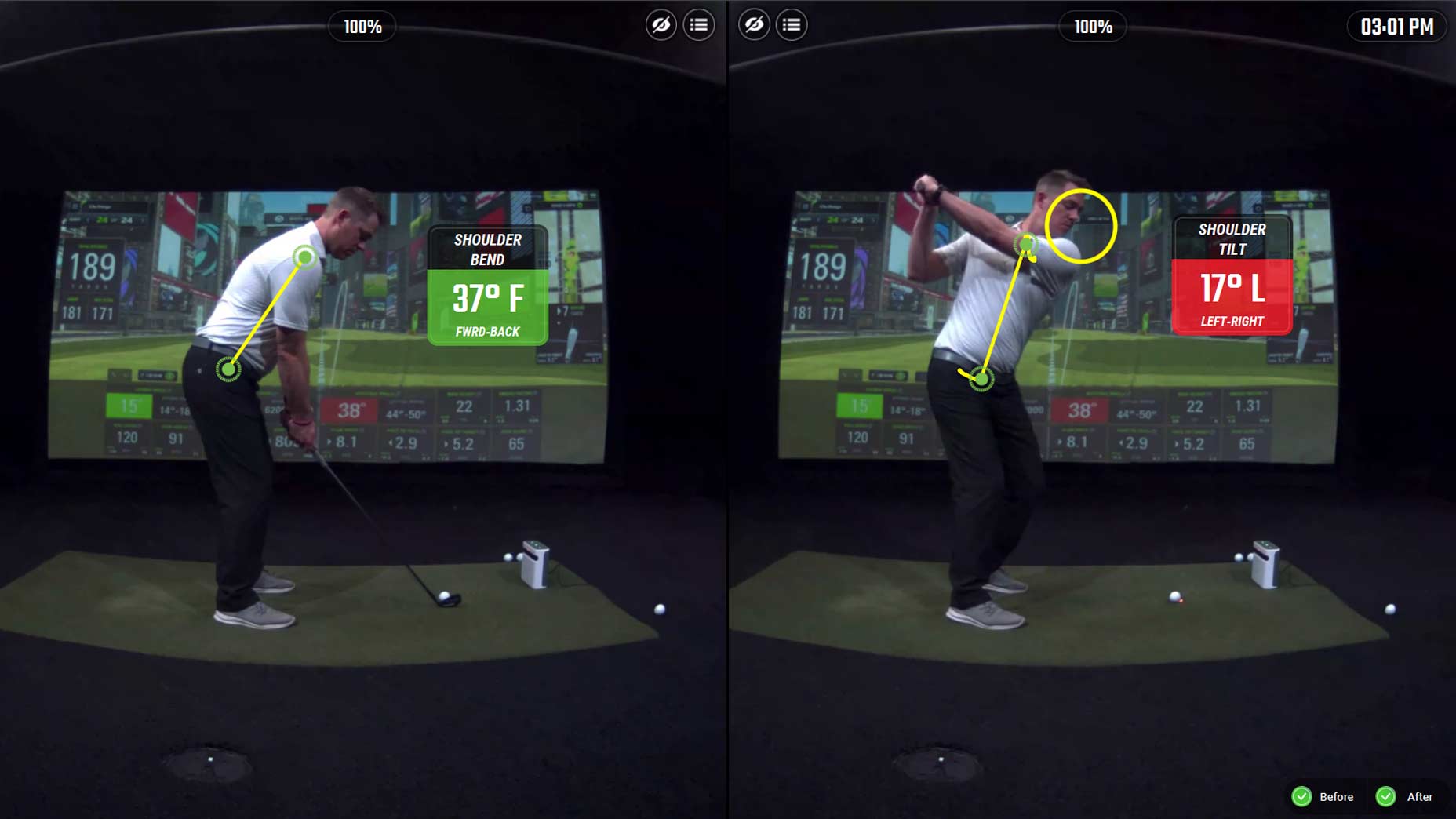Tiger Woods my not be in his prime anymore, but that doesn’t mean he’s washed up. Far from it, in fact.
Sports fans have had an up-close view of his current form thanks to the launch of TGL. Without the wear and tear of a typical tournament week weighing on him, Woods has been able to showcase the skills that made him one of golf’s all-time greats. Sure, it may be simulator golf, but it’s still pretty impressive to watch the 15-time major winner work.
One of the coolest parts of TGL is the fun tech they infuse into the broadcast. One such example is novel camera angles — such as one straight overhead. In Jupiter Links’ latest match, those overhead cams showed us Woods’ swing from an angle few have ever seen — and it revealed a key swing move that is crucial for generating power.
Here is an amazing view from @TGL showing @TigerWoods driver swing.
— Jayson Nickol, PGA (@JaysonNickol) February 12, 2025
What’s the biggest thing that stands out to you here?
What I see, that most golfers would benefit from is that he shifts before he turns both in his backswing and also in his transition. That will allow… pic.twitter.com/64ed1P7QoI
Tiger’s key swing move
If you watch the video above, you’ll likely notice a few things about Woods’ swing, like how he flares his lead foot, how he rolls his trail ankle towards the target or how he sets up with the ball just inside his lead foot.
All of these elements merit their own breakdowns, but that’s not what jumped out to me after several watches. No, what jumped out to me was how early in the backswing Woods shifts his weight toward the target.
As you watch the video, notice when Woods starts his weight shift compared to when he actually starts his downswing. It’s can be difficult to pick out upon first watch, but after a few times through you’ll start to notice he begins shifting toward the target well before he finishes his backswing. You can see stills of this in action in the pictures below.
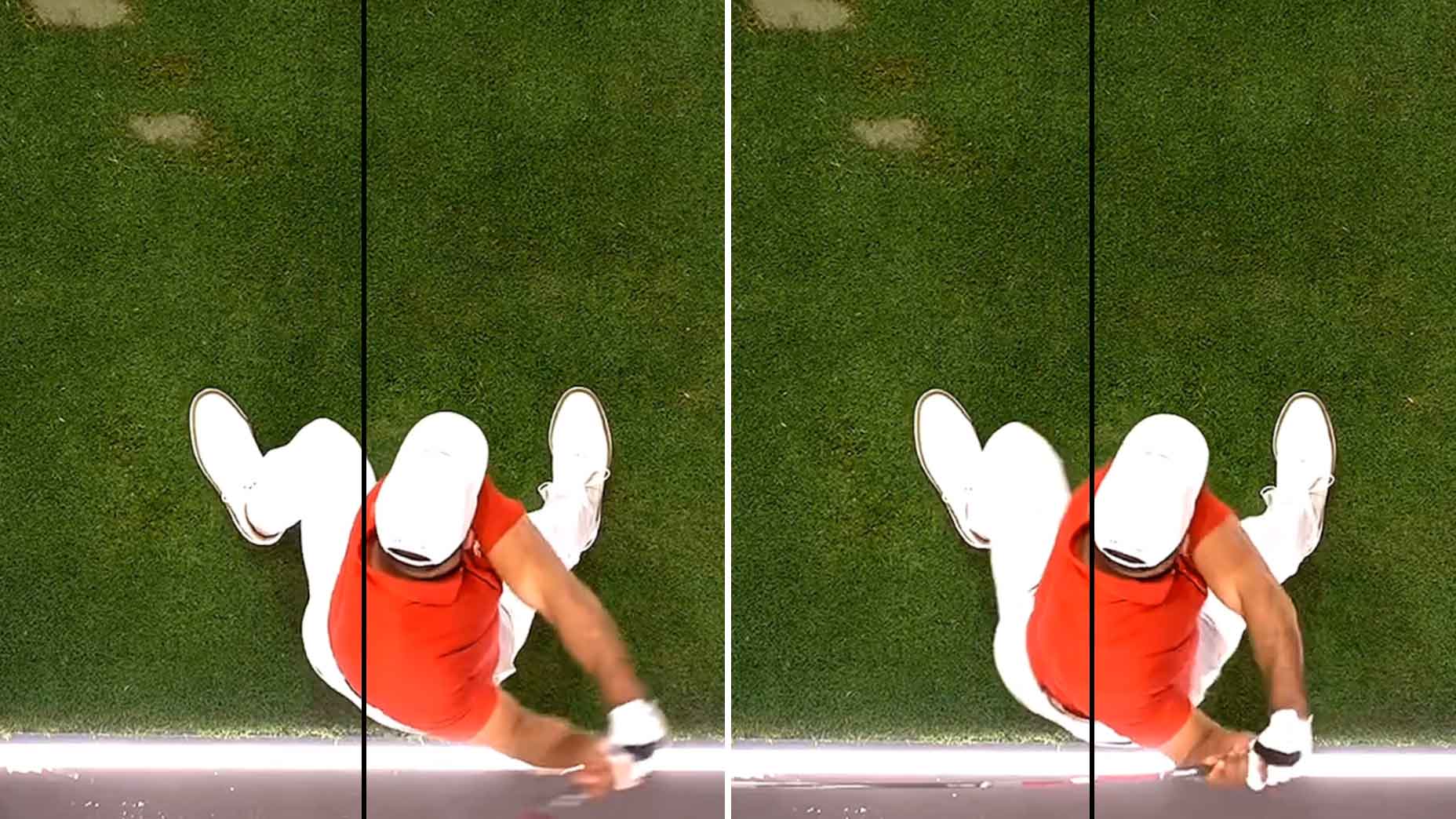
The first image shows Woods near the top of the backswing with much of his weight on his right side. However, he’s not quite done with the backswing, as he continues his turn to the top. But as he continues his turn, he’s actually bumping his hips slightly toward the target.
This move is called recentering, and it’s something seen in all good swings. Lots of amateurs don’t incorporate this move into their swings, and it causes a loss of power, inconsistent contact and generally poor ball striking. So, if you’re struggling with any of those things, it could be that you’re not recentering properly.
If you’re interested in learning more about recentering, and why it’s good, check out some of our previous articles on the topic. You’ll quickly find that it’s not just 15-time major winners who sequence their swing like that!
